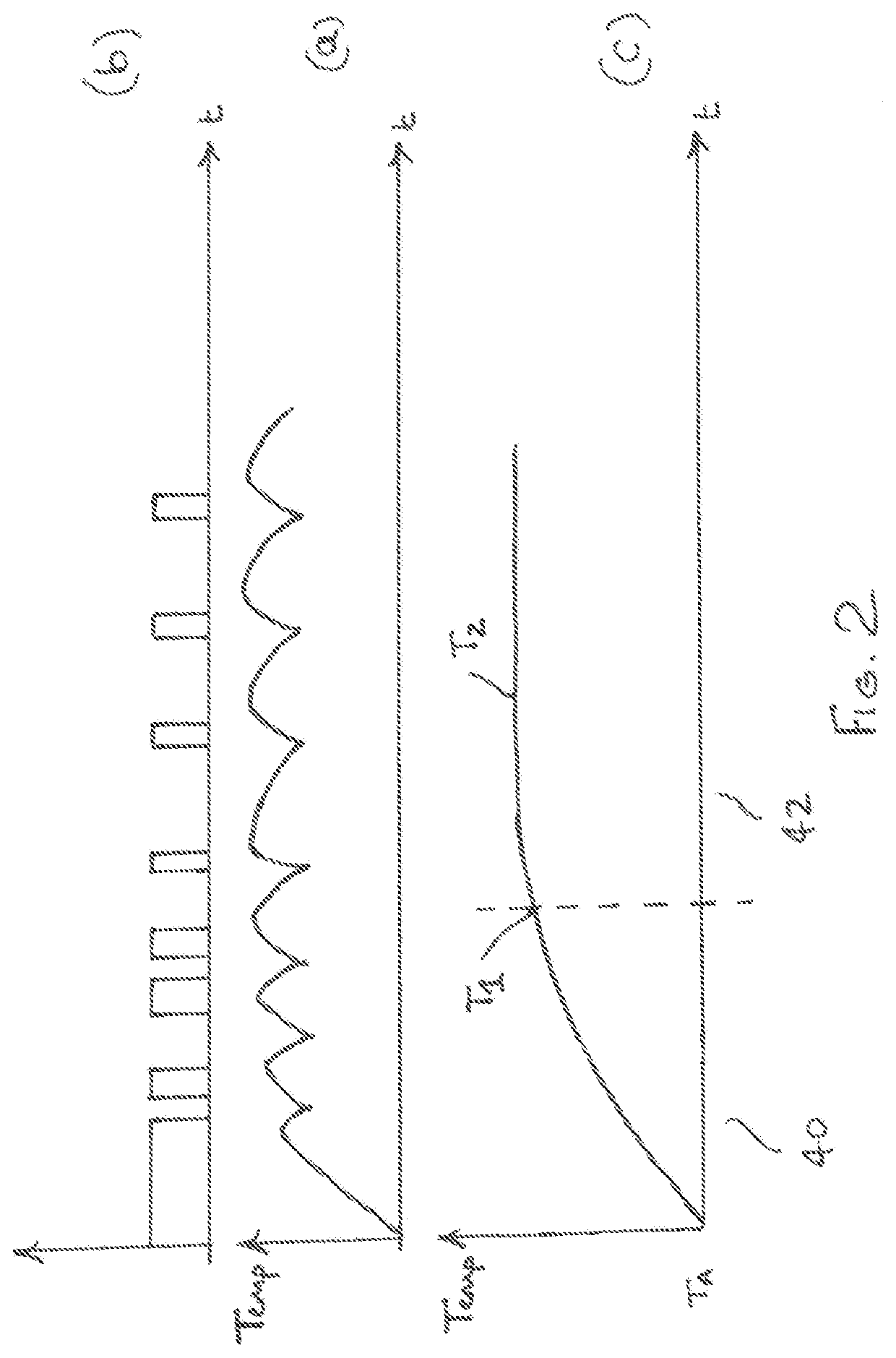Method for operating an electronic vapour inhaler
a vapour inhaler and electronic technology, applied in the field of electronic vapour inhalers, can solve the problems of inhalation, charring of aerosol-forming substrates, and inhalation of harmful chemicals such as carbon dioxide and tar, and achieve the effects of low thermal mass, rapid heating, and convenient handling
- Summary
- Abstract
- Description
- Claims
- Application Information
AI Technical Summary
Benefits of technology
Problems solved by technology
Method used
Image
Examples
Embodiment Construction
[0025]Embodiments of the present disclosure will now be described by way of example only and with reference to the accompanying drawings.
[0026]Referring initially to FIG. 1, an electronic vapour inhaler 10 comprises a generally elongate housing 12 having a proximal end 14 and a distal end 16. The electronic vapour inhaler 10 includes a mouthpiece 18 at the proximal end 14 through which a user can inhale vapour generated by heating a non-liquid flavour-release medium 30. The electronic vapour inhaler 10 includes a control arrangement 20, e.g. in the form of a microprocessor, and a power source 22 in the form of one or more batteries which could, for example, be inductively rechargeable.
[0027]The housing 12 includes a chamber 24 containing the non-liquid flavour-release medium 30. The chamber 24 is located at the proximal end 14 of the housing 12 adjacent to the mouthpiece 18, but this is not strictly necessary and it could be located at any suitable position between the proximal end ...
PUM
 Login to View More
Login to View More Abstract
Description
Claims
Application Information
 Login to View More
Login to View More - R&D
- Intellectual Property
- Life Sciences
- Materials
- Tech Scout
- Unparalleled Data Quality
- Higher Quality Content
- 60% Fewer Hallucinations
Browse by: Latest US Patents, China's latest patents, Technical Efficacy Thesaurus, Application Domain, Technology Topic, Popular Technical Reports.
© 2025 PatSnap. All rights reserved.Legal|Privacy policy|Modern Slavery Act Transparency Statement|Sitemap|About US| Contact US: help@patsnap.com


